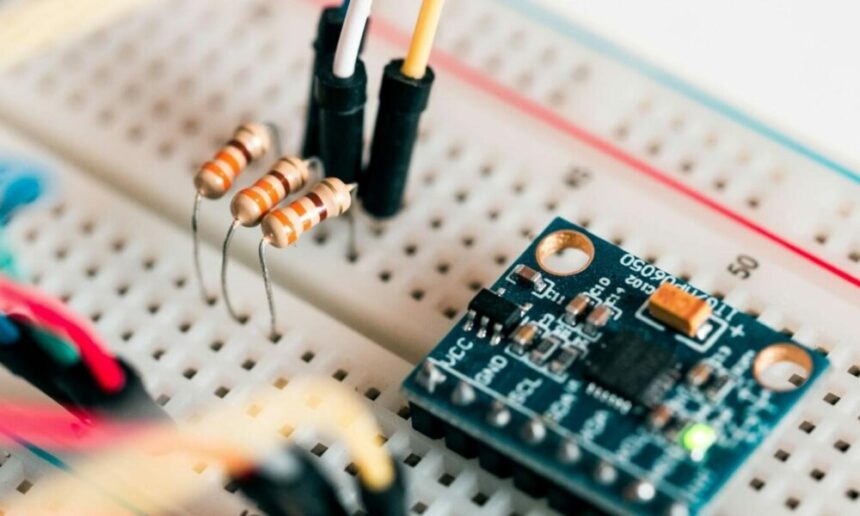Resistors are used in electrical circuits to regulate current flow and keep components safe. Additionally, they enable voltage dropping, which is critical for voltage regulation. Do you know they can do more than this? For instance, they help shape the signal in signal processing circuits.
This piece of content will give you a detailed discussion of resistors, covering questions like:
- What is a resistor and what does it do?
- How does the resistor work?
- What is the use of resistors?
- What materials do resistors use?
What Are Resistors?
- What Is a Resistor and What Does It Do?
Resistors are passive electrical components that can resist the flow of electric current. How does a resistor work? Basically, it works by converting electrical energy into heat and follows Ohm’s Law: V (the voltage drop) = I (the current that passes through it) times R (the resistance).
Based on the functions of voltage dropping and current limiting, resistors can do the following things:
- Signal shaping: In signal processing circuits, resistors are used to shape the waveform of signals, for example, in filters that smooth out noise.
- Timing: Resistors can also help create timing circuits when in conjunction with capacitors, such as RC circuits that determine the time constant for charging and discharging.
- Biasing: In amplifier circuits, resistors are used to set the operating point for transistors and other active components.
- …
- Types of Resistors
Resistors have different types for different applications and operating conditions. Basically, there are fixed resistors, variable resistors, and specialized resistors.
- Fixed resistors have a set resistance value and are used in applications with constant resistance. These are carbon composition, metal film, and wire-wound resistors. Carbon composition resistors handle high-energy pulses, though they typically have high noise and lower precision. Metal film resistors are utilized in precision applications for their stability and low noise. Meanwhile, wire-wound resistors are stable at high temperatures and offer large power ratings.

- Different from fixed resistors, variable resistors like potentiometers, trimmers, and rheostats may be changed manually or electronically. Potentiometers might be used in volume controls. At the same time, trimmers are employed for fine-tuning circuits during calibration.
- Specialized resistors include thermistors, which change resistance with temperature for temperature sensing and compensation. Photoresistors, or LDRs, decrease resistance with increasing light intensity and are used in automatic lighting controls. Furthermore, varistors protect circuits against voltage spikes. They have a nonlinear resistance that decreases sharply at a specific voltage threshold. Similarly, magnetoresistors change resistance with a magnetic field. They can be found in position and speed-sensing applications in automotive and industrial systems.
What Materials Do Resistors Use?
The above discusses the question: What is a resistor and what does it do? In this part, we will cover what materials are used in resistors. Some common materials include:
- Carbon Composition
Carbon composition resistors typically have a cylindrical structure that mixes carbon particles with the binder. Their big highlight is their ability to survive high-energy pulses. Along with their relatively small size, they can be found in many applications, like medical defibrillators.
The con side is that carbon composition resistors have a higher noise level due to their structural properties. Further, their resistance might drift with temperature and aging. Nevertheless, in environments where reliability under high stress is more critical than precision, such resistors are worthwhile.
- Carbon Film
Carbon film resistors offer better stability than carbon composition resistors. They have a thin carbon layer deposited onto a ceramic substrate. It performs better with lower noise and more steady resistance values.
Compared to carbon composition resistors, carbon film resistors are better for precise applications due to decent tolerance values. Additionally, their good temperature stability enables consistent performance under different temperature environments. Typically, they are used in general-purpose electronic circuits demanding stability without the higher precision of metal film resistors.
- Metal Film
Metal film resistors are among the most precise types of resistors. They have a sputtered thin metal layer on an insulating substrate. The advantage of metal film resistors is their lower temperature coefficient. It means their resistance stays stable across temperatures. It benefits precision measuring instruments and high-fidelity audio equipment.
Also, metal film resistors offer long-term stability and low noise levels, thanks to the uniformity of the metal layer. Nonetheless, their power dissipation is limited, which makes them not the first choice for high-power applications. Yet, due to their reliability and steadiness, most low-power precision circuits are the resistors of choice.
- Wirewound
Wirewound resistors feature a wound metal wire around a ceramic, plastic, or fiberglass core. The wire’s resistance material and the winding method enable accurate resistance values.
Apart from that, because of their design, wirewound resistors can handle very high power levels. It is indispensable in power supplies, motor control, and other high-current applications. However, they have drawbacks like parasitic capacitance and inductance, which can cause undesirable effects in circuits.
- Metal Oxide
Metal oxide resistors are like metal film resistors but use metal oxide materials. It gives them high-temperature stability and overload tolerance. Owing to their construction, they exhibit less noise than carbon-based resistors. They are more stable over a temperature range.
Plus, metal oxide resistors are resilient to harsh applications. Their resistance to high surge conditions suits surge protection devices. Though they may not attain the same level of precision as metal film resistors, their stoutness in punishing conditions is perfect for industrial and power applications.
– Where to Find Quality Electronic Components
Finding the right resistors is important for the smooth function of the whole circuit. There, you may need a reliable electronic component distributor for quality electronic parts. AIChipLink might be a good choice for you to explore. Its 4.9 million in-stock product catalog covers more than different types of resistors but also other hard-to-find electronic parts.
Conclusion
Upon finishing this piece, the question “What is a resistor and what does it do?” may no longer trouble you. Moreover, knowing where to find the right components is just as important as knowing how they work. Contact AIChipLink to have the high-quality electronic components you want. Its vast product selection, dedication to quality, and exceptional service may give you a hassle-free experience.








